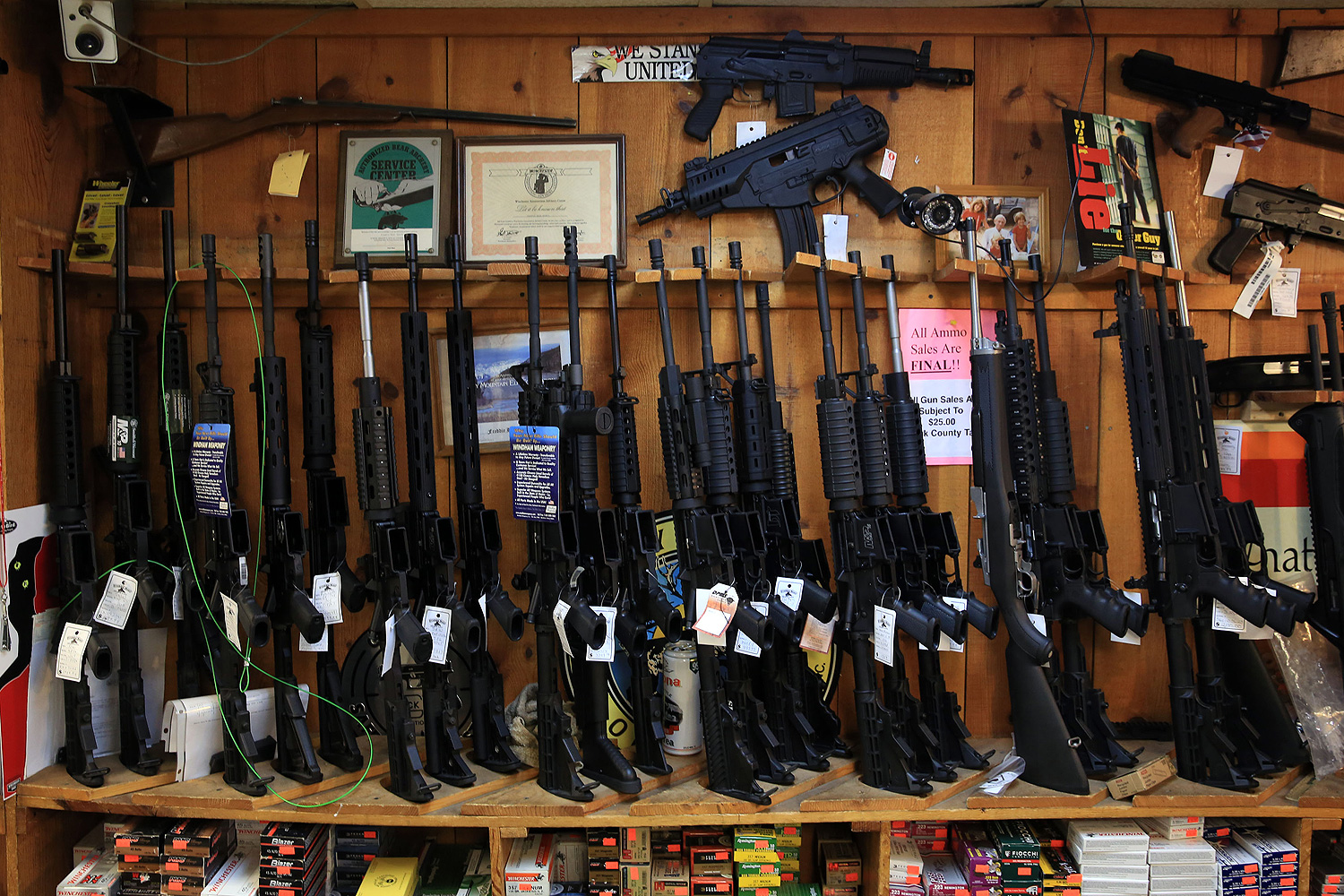In 2013, when the state of Illinois legalized concealed carry, it also took away the authority of local communities to ban assault weapons—unless cities got an ordinance on the books within ten days. One of 20-some cities to do it was the wealthy North Shore suburb of Highland Park, which passed an assault-weapon ban in a 6-1 vote by City Council despite pointed objections:
Several opponents said assault-weapon violence does not plague Highland Park. Others cautioned that the local ordinance could end up in court, leaving residents on the hook to pay for its defense. Still others evoked imagery of Adolf Hitler, Joseph Stalin and other fascist, communist or terrorist regimes who disarmed civilians before embarking on bloody massacres.
[snip]
Highland Park resident Sasha Turk said she grew up learning gun safety, which she said is crucial. She argued against the local law, arguing that virtually anything could be used as a weapon.
"If I really wanted to, I could kill somebody with a lamp or a coffee mug," Turk said.
Soon thereafter a local pediatrician and the Illinois State Rifle Association filed a lawsuit, which worked its way up the ladder over the past two years. Today that ended: The Supreme Court refused to hear the case, allowing the Seventh Circuit court's decision upholding the ban to stand. The majority did not explain its decision, but the two dissenters, Justices Thomas and Scalia, did—and it's a window into where the gun debate is and how it got here.
This all started back in 2008, when the Supreme Court ruled in D.C. v. Heller that a federal law prohibiting handguns in Washington, D.C. was unconstitutional. In 2010, it extended that to states and localities in McDonald v. City of Chicago. Thus it was done: A wholesale ban on gun ownership was unconstitutional, anywhere in America.
But neither decision said that you couldn't ban certain types of guns. In fact, Heller specifically states that you can: "[U.S. v. Miller]’s holding that the sorts of weapons protected are those 'in common use at the time' finds support in the historical tradition of prohibiting the carrying of dangerous and unusual weapons."
U.S. v. Miller was decided in 1939, but it looks a lot like the scenario today: It was fairly easy for criminals to get guns that shoot a lot of bullets in a very short amount of time, and this led to bloody, high-profile mass murders. Only then the issue was machine guns, the criminals were gangsters, and the mass murders were things like the St. Valentine's Day Massacre. So Miller was targeted to guns that, in theory, only criminals would have any use for, like the Tommy gun.
And the resistance was identical. Here's what the Tribune editorial page argued in 1934, when the laws at the heart of Miller were passed:
In the revolutionary war the people were able to gain their liberties because when they tried for them possession of firearms was common and many of the citizens knew how to use them. A disarmed population of people familiar with weapons would not have had much chance. In 1789 the weapons in general use would be long rifles, muskets, and clumsy pistols. The people were entitled to have the best weapons they could make or purchase. Now the best weapons for individuals are machine guns and automatic rifles. Use which can be made of these is indicated by law, but it is not the possession of which is properly an offense under the constitution.
In other words: Regular folks might not own machine guns… but maybe they should.
Has anything changed since then? Perhaps one thing: Plenty of recreational shooters like owning "assault" weapons of the type prohibited by Highland Park. According to Seventh Circuit judge Frank Easterbrook, the Reagan appointee who wrote the decision upholding the ban—a mere 2-1 majority—nine percent of gun owners own assault weapons, and "what line separates 'common' from 'uncommon' ownership is something the Court did not say."
Nor could Easterbrook decide whether assault weapons are too dangerous, or at least whether the fact that they're dangerous in a good way outweighs being dangerous in a bad way. An excerpt from the Seventh Circuit ruling:
And they are designed to spray fire rather than to be aimed carefully. That makes them simultaneously more dangerous to bystanders (and targets of aspiring mass murderers) yet more useful to elderly householders and others who are too frightened to draw a careful bead on an intruder or physically unable to do so. Where does the balance of danger lie?
So Easterbrook basically concluded that states and localities are better at deciding this than a handful of judges, and besides, "the Constitution establishes a federal republic where local differences are cherished as elements of liberty." In some ways it's a rather conservative argument—don't rely on unelected judges to tell you what to do.
But Clarence Thomas, in his dissent from the Supreme Court's decision not to take up the case, wants none of this. His only priority is rather fascinating (emphasis mine):
The right to keep and bear arms is an independent, individual right. Its scope is defined not by what the militia needs, but by what private citizens commonly possess.
And that brings us back to Miller. In 1934, Tommy guns were popularly associated with gangsters and war. In 2015, Thomas notes, five million people are estimated to own "AR-style semiautomatic rifles." That's all he needs: Law-abiding citizens like owning them, and a lot do; therefore their ownership is constitutional.
Thomas didn't get his way this time. But his dissent shows how the changing nature of America's relationship with guns could change the debate going forward. The popularity of semiautomatic rifles has increasingly normalized them—and for Thomas, what's normal is constitutional.




